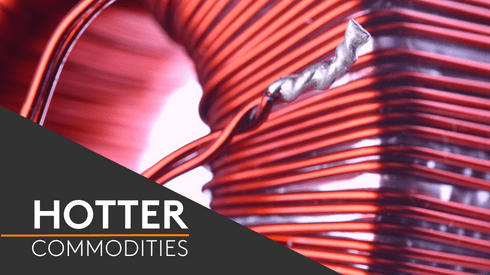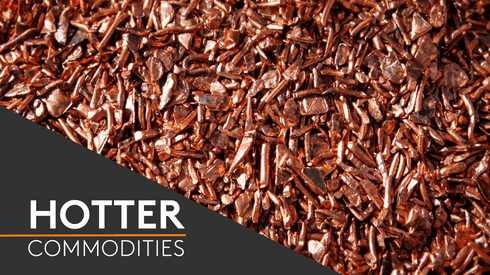The LME zinc price gained 1%, while copper was up 1.9% and recently quoted at $6,314 per tonne. Volume across the complex has, not surprisingly, been strong with 14,686 lots traded as at 6:53am London time.
The precious metals were stronger too with gains averaging 1.1%, helped by a weaker dollar and reports that Qatar is to leave Opec, which, combined with the trade developments, has led to a 5% bounce in crude oil prices.
In China this morning, the January contract prices for base metals were stronger by an average of 1.9%; led by a 3.4% rise in zinc, while copper was up 1.1% at 50,120 yuan ($7,266) per tonne.
Spot copper prices in Changjiang were up by 1.5% at 50,310-50,700 yuan per tonne and the LME/Shanghai copper arbitrage ratio was weaker at 7.94, suggesting the LME is leading the stronger tone.
In other metals in China, the May iron ore contract on the Dalian Commodity Exchange was up by 1.9% at 463 yuan per tonne. On the SHFE, the June steel rebar contract was up by 1.2%.
In wider markets, spot Brent crude oil prices had jumped by 5.06% this morning, to $62.09 per barrel – the recent low being $57.52 per barrel. The yield on US 10-year treasuries was firmer at 3.0447%, as was the German 10-year bund yield at 0.3400%, suggesting less risk-on in the markets.
Asian equity markets have reacted strongly to G20 developments with prices higher on Monday: the Nikkei (1.0%), the ASX 200 (1.84%), the Kospi (1.67%), the Hang Seng (2.40%) and the CSI 300 (2.77%).
This follows mixed performances in western markets on Friday; in the United States, the Dow Jones closed up by 0.79% at 25,538.46, while in Europe, the Euro Stoxx 50 was off slightly by 0.3% at 3,173.13.
The dollar index is weakening, but remains in mid-range and was recently quoted at 96.79. The other major currencies are for the most part firmer: euro (1.1376), the Australian dollar (0.7375) and sterling (1.2787), but the yen is weaker at 113.51, again suggesting a degree of risk-on.
The yuan has jumped and was recently quoted at 6.8906, while the other emerging market currencies we follow are mixed, most are firmer or little changed, while the rupee is weaker.
The economic agenda is busy with the release of manufacturing purchasing managers’ index (PMI) data, which is out across all regions. Japan’s reading came in at 52.2, up from a previous reading of 51.8 and China’s 50.2 just beat the 50.1 that was expected. Hopefully the respite in the trade war will help fuel an economic rebound in China and prevent the PMI slipping below the 50 level which would imply the economy is contracting. Other data that is out later includes US construction spending, US ISM manufacturing prices and US total vehicle sales.
In addition Federal Open Market Committee (FOMC) member Richard Clarida is speaking three times, and FOMC member Lael Brainard and UK Monetary policy committee member Andrew Haldane are also speaking.
The G20 developments have seen the base metals prices gap higher, key will now be what follow-through action there is. Indeed, the developments have removed the immediate fear of the negative situation escalating which should give the global economy and commodities time to reflect their fundamentals again, which we think should be bullish.
For now, with the global economy receiving a boost, the rising tide is lifting all the metals we follow and rising oil prices should also be bullish for gold/commodity prices, especially if investors start to get interested in buying into commodity baskets.




